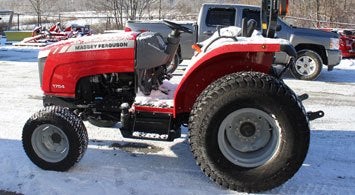
The tires on your tractor are the final interface and play a large role in whether or not that power actually is delivered to the ground. Selection of the correct tire should be through a thorough consideration of the size required, soil conditions encountered, tasks to be done, and price.
Tires are sized using a numbering system that begins by identifying the nominal tire cross section in inches. This first number is followed a dash or letter R, with the dash correlating to bias ply tires and the letter R for radial designs. The style of tire construction is then followed by a number that identifies the rim diameter. For example, size 18.4R38 would have an 18.4” nominal tire cross section, radial construction, and riding on a 38” diameter wheel. A tire of the same size in bias ply construction would read 18.4-38. Metric tires use a similar numbering system, with an aspect rating after the nominal cross section and before the construction type. A 320/90R46 tire would have a nominal cross section of 320 millimeters, a 90 aspect ration (section height as a percent of width), radial construction and 46” diameter rim.
In addition, many tires are labeled with a load index number and a speed symbol. When used, these are found to the right of the tire size in a small block. A tire that is labeled 18.4R38 followed by 157 and A8 would have a cross section of 18.4”, radial design, 38” rim, a load index of 157 and speed rating of A8. In this case, this tire would have a load index of 157, or 9,100 lbs, at A8 speed which correlates to 25 mph.
For modern tractors, there are basically five types of tires for the rear with a few different additional options for the front.
Rear Tire Choices
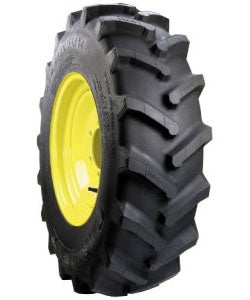
Ag tires (R-1) are generally the preferred tire for general dry land farming. These are also known as lug tires with the traction grabbing component being the lugs which are angled typically at 45 degrees or 23 degrees, depending on the manufacturer.
A more aggressive Ag tire is the R-1W which has 25% more tread depth than R-1. These are more suitable in wet, moist and heavy clay soils.
Buying a Tractor: New vs. Used
R-2 tires are an Ag variant that is less common in North American markets. The tread depth is twice that of a R-1 tire. This aggressive design is suitable for farming in wet muck or mud and is found predominantly in rice paddy or sugar cane applications.
Turf tires come with the designation R-3, and as the name implies, are suitable for general use while offering the least amount of turf damage. Turf tires are also known to have good traction on gravel and loose sand. Some even prefer the low, wide tread design with lots of ground contact on slopes and in snowy conditions.
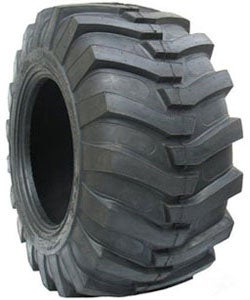
A compromise tire that is common these days is the industrial (R4) tread design. Industrial tires offer much of the traction advantages of a lug design while having less of a negative impact on turf.
And while it might be tempting to pick the most aggressive tread style, such as going to a R-2 design, in dry conditions these tires will wear more quickly and provide an extremely rough ride. R-1 tires used in sandy conditions will tend to bury whereas R-3 tires are better at staying on top of loose sand.
Front Tire Choices
Front tires can come in the above styles, but often ribbed tires are the preferred design. Rib tires come in single, three, four and even five rib styles. Each has its own advantages.
Single-rib tires get the designation, F-1, and are sometimes known as mono rib tires. This style penetrates deep into the soil for maximum steering control.
Three-rib tires get the designation, F-2, and offer maximum steering control as well as minimal lateral side-slip due to the design of the raised center rib.
Four-rib tires get the designation, F-2M and are suitable for heavy loads on hard surfaces. Four rib tires also have excellent load distribution and flotation qualities.
Five-rib tires are industrial designs and offer good road handling and durability.
Bias Ply vs. Radial
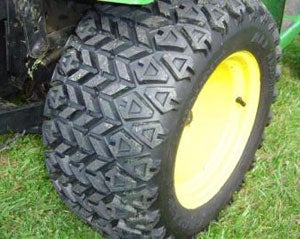
In the automotive world, the argument of bias ply vs. radial is long over, with radial tires ruling the roost. In the case of tractors, the argument isn’t so case closed. Operating at lesser speeds, bias ply tires are less expensive, have a more durable sidewall that is less prone to bruising damage from stumps and rocks, and thus are widely used.
Tractor Ballasting Tips and Options
Radial tires are more expensive but offer a smoother ride, have a longer tread life, and compact the soil less. Radials can also be run at lower air pressures, giving the tractor as much as 10-15% more traction while saving fuel and improving efficiency. And on pavement, the wear durability can be up to 33% better than with a bias ply tire.
Tire Ply Rating / Star Marking / Load Index
Pneumatic tires were first given a ply rating when cotton canvas was used in the construction, but a cotton layer could only withstand so much pressure and/or load before it ripped. Manufacturers found that by adding plies, strength increased. Plies were always added in pairs as the threads were oriented at angles to each other. Thus a four-ply tire was stronger than a two-ply tire and a six-ply tire stronger than a four-ply tire. When cords replaced the ply system, manufacturers discovered they could use large cords and less plies. Thereafter, a four-ply corded tire could be stronger than a six-ply cotton canvas tire. To avoid confusion, a ply numbering system was adopted based on the tire strength and not on the number of physical plies. A good example is a modern steel belted tire where that single steel ply is equivalent to 12 cotton canvas plies. It should come at no surprise that adding plies increases cost. However in the selection of a tire, higher initial price is often offset by the expected improved durability and the longer tread wear expectancy. Ply ratings are still used in bias ply tires and some older radial designs.
Today we see radial tires rated using a star marking system correlated to the rated inflation capacity. Using a star system, the tire is rated with one, two or three stars, with one star equaling 18 psi, two 24 psi, and three 30 psi. Actual load handling varies with tire size.
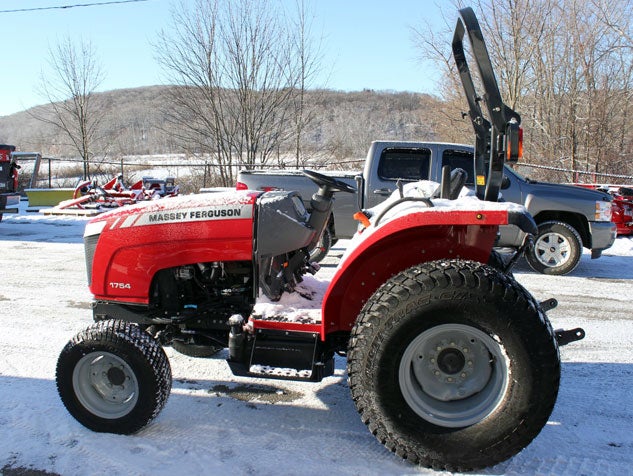
Metric radials use the load index as a method of rating capacity. An international load index table is used to determine the capacity of the tire. In the example used earlier, the tire with a load index of 157 had a capacity of 9,100 lbs.
When selecting a tire for a given application, the tire must be large enough and of enough plies to carry the maximum load that will be encountered. Consideration must also be given to the total load carried. Remember to include tools and tanks carried as well as ballast. Also, tire pressure is critical. Even a 10-ply rated tire operated at six-ply pressure will carry only the load of a six-ply tire.
How To Choose A Transmission For Your Tractor
Mixing Tires
Tires can usually be mixed, even between radial and bias ply designs, though the performance can only be that of the lowest common denominator. But tractors with mechanical front wheel drive (MFWD) systems, the rolling circumference must be matched to the tractor front to rear gear ratio. If you are considering running tires of different sizes than original equipment, check with your manufacturer first to ensure expensive drive component damage doesn’t occur.
Other Tire Choices Available
With multi-purpose vehicles, manufacturers are pushing the tire performance envelope and the tire industry has reacted with special purpose tires. High flotation designs, such as HF-1, HF-2, HF-3 and HF-4, have wider cross sections, larger air volumes, and operate at reduced pressure. For lawn and garden tractors, heavy duty all purpose (HDAP) tires offer maximum traction in a variety of conditions with lesser turf damage than when R-1 tires are used.
Conclusion
With so many choices to consider, picking the right tire can be a daunting task. Our advice is to carefully research your options. If you have experience with a given tire in a given application, rely on that knowledge. If you are unsure or wonder if you have been using the correct tire for the job, consult your tire professional. Their wealth of knowledge can be invaluable.
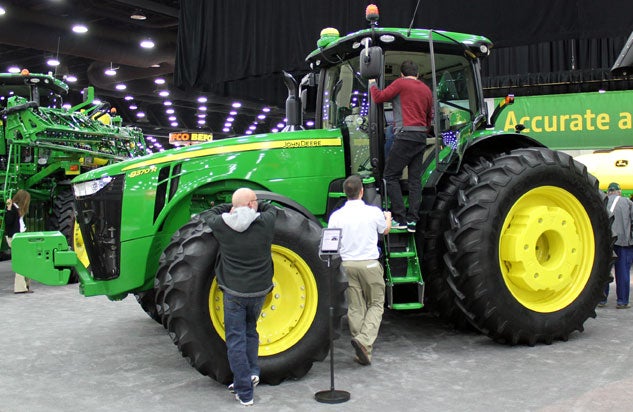
 Your Privacy Choices
Your Privacy Choices